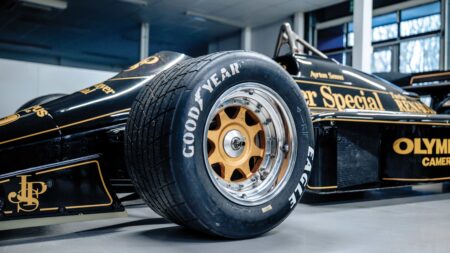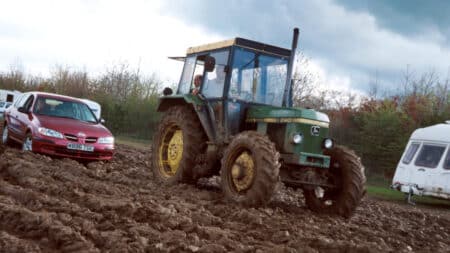
Why Kimi Antonelli was the silver lining in Mercedes' 'worst' F1 race of 2025
As Mercedes dropped down the F1 order in Saudi Arabia, team boss Toto Wolff found a hope in Kimi Antonelli's performance for the team
A series taken from the 162-page Motor Sport special 100 Greatest Grands Prix (other specials are available here).
Racing’s toughest nuts butted heads for almost two hours on a circuit that was hard on tyres and brakes. According to Denis Jenkinson of Motor Sport, they “made everyone else look like a bunch of old women.” He wasn’t wrong.
Alan Jones was clearly the quicker of the two, his Williams’ newfound reliability having allowed him to win three of the four previous rounds. Ferrari’s Gilles Villeneuve, however, did not know when he was beaten. More than half a second slower than the Australian in practice, the local hero burst from the outside of the front row to take a lead that he was to hold for 50 laps.
Jones, with nobody in his mirrors, was able to sit tight and maintain an ominous presence and unrelenting pressure, feinting this way and that, and quickly making up time lost behind an inattentive backmarker. He was in control, though not in the lead, and his outbraking move at the hairpin appeared decisive when it came. Having swiftly established a three-second lead, he felt able to switch to conservation mode.
His irrepressible rival immediately locked on again and Jones was forced to set the race’s fastest lap seven laps from the end. His advantage at the finish was a whisker over a second.
Such was the pace of the top two, only Jones’s team-mate Clay Regazzoni finished on the same lap as them – and the Swiss, a renowned tough nut himself, was well over a minute behind. PF
The 1979 Canadian Grand Prix on the Database
About 100 Greatest Grands Prix | From the editor Damien Smith
The Grand Prix motor races we can never forget…
Welcome to this special one-off magazine, dedicated to our love of Grand Prix racing and produced by the same team that brings you Motor Sport each month.
It seemed a good idea: whittle down 107 years of racing history to come up with 100 GPs that could be considered the ‘greatest’ – then rank them in meritocratic order. By week three, the old grey matter was beginning to ache…
Defining greatness was the first task. There were the obvious races – the wheel-to-wheel duels, the comeback classics. But there were also individual performances of supreme dominance, races that might not necessarily have been the most exciting to witness. Greatness goes way beyond thrill-a-minute, we decided.
Then there were those races of prominence, attached to a certain time or place that made them hugely significant. I’m thinking specifically of Belgrade, 1939. Only five entries took the start of a race that didn’t sound particularly scintillating. But as it happened to take place on the very day WWII broke out, we felt it worthy of inclusion. Meanwhile, Sebastian Vettel’s remarkable maiden GP win at Monza in 2008, for lowly Scuderia Toro Rosso, was left on the cutting room floor. Is that fair? You decide. We also opted to include a few races that weren’t Grands Prix, leastways in name, although the strength of entry was such that they might as well have been…
Choosing which races should make the list was hard enough; ranking the top 100 in some sort of order was even tougher, especially when it came to the crunch: which should be number one? We never did agree unanimously on the ‘greatest’, but if the magazine was to be finished a decision had to be taken. And that’s what I’m here for!
Will you agree with our choice and order? Probably not. But if steam begins to issue from your ears, take a deep breath. In any exercise such as this, there is no definitive list – because there can’t be. Our top 100 is based on opinion, nothing more, designed to be a bit of fun and to spark good-natured debate among fans of the world’s greatest sport.
So turn the page, delve in – and whatever you do, don’t take it too seriously.

As Mercedes dropped down the F1 order in Saudi Arabia, team boss Toto Wolff found a hope in Kimi Antonelli's performance for the team

Zak Brown is still adamant on his approach that Lando Norris and Oscar Piastri are ‘number ones’ at McLaren. But how long will it be before history repeats itself and takes a sour turn?

It's 40 years since Ayrton Senna's incredible first F1 win at Estoril – we captured the brilliant grand prix car he did it in for this month's magazine

Twenty-five years ago, the British GP was the subject of a 'prank' by the powers that be as Bernie Ecclestone and Max Mosley made the BRDC hold the race on Easter Sunday. But the chaos that ensued didn't have the desired effect, as Matt Bishop recalls